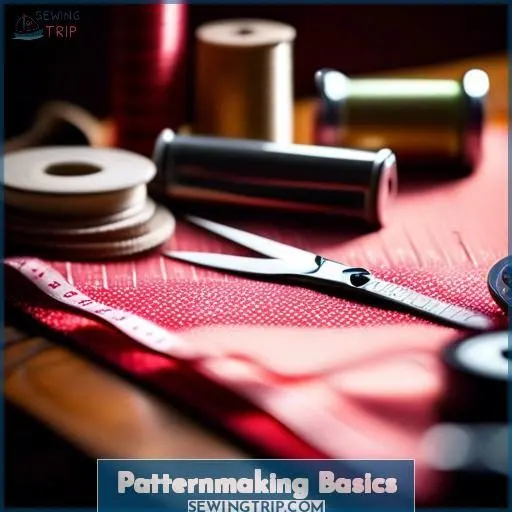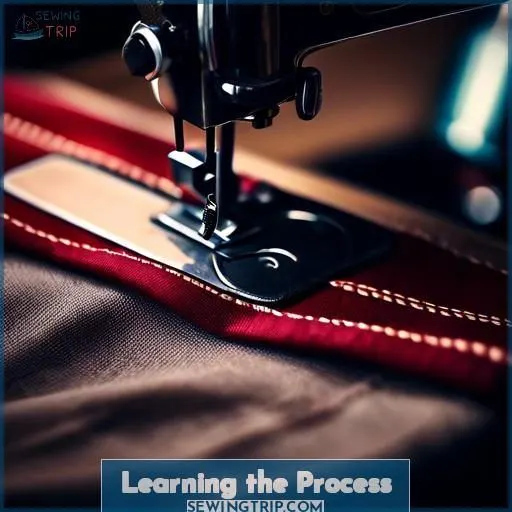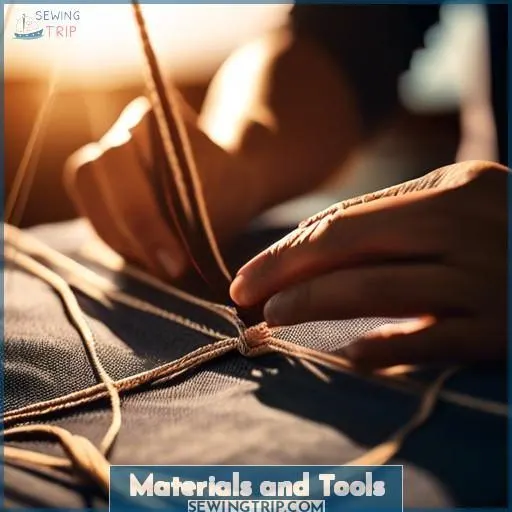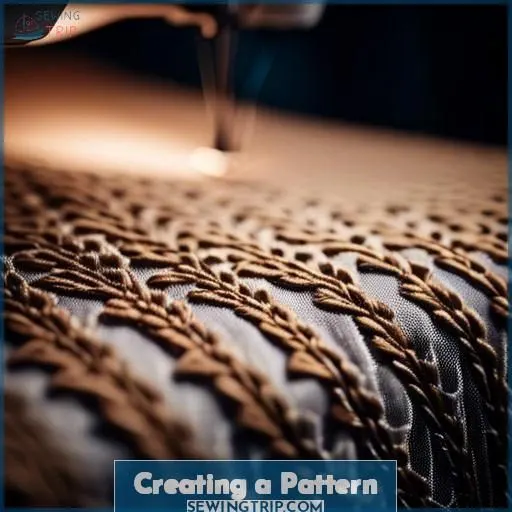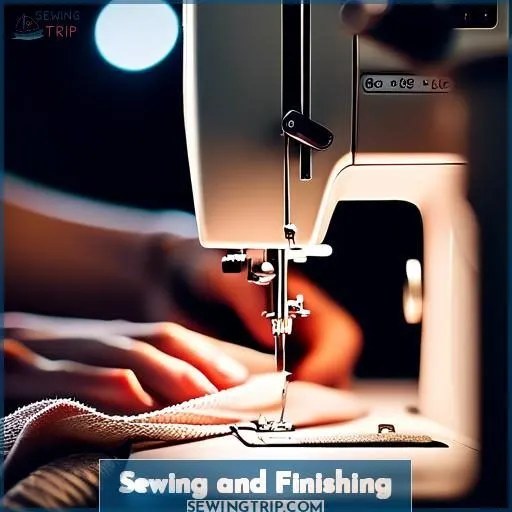This site is supported by our readers. We may earn a commission, at no cost to you, if you purchase through links.
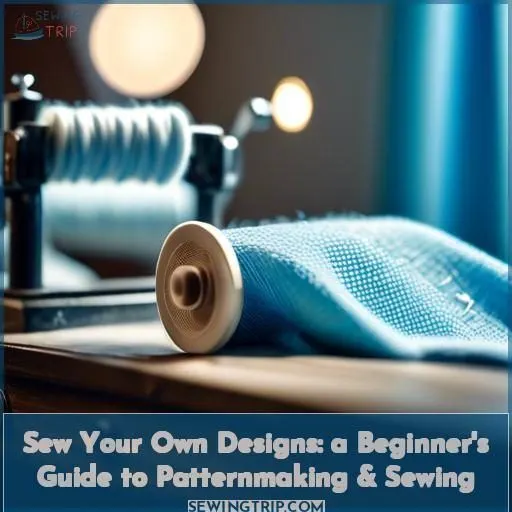
To design and sew your own clothes, start by learning the fundamentals of patternmaking.
This foundational skill for fashion design involves creating templates to guide your garment construction.
Begin with simple patterns and work your way up to more complex designs as you develop your understanding of geometry, sewing shapes, and technical resources.
Select fabrics suitable for your project and skill level.
Then use precise measuring tools and pattern manipulation techniques to create unique pieces.
With patience and practice, you’ll soon be able to express your creativity and transform your wardrobe through the rewarding process of designing and sewing.
Table Of Contents
Key Takeaways
- Start with the fundamentals of patternmaking, which involves creating templates to guide garment construction.
- Begin with simple patterns and work your way up to more complex designs as you develop your understanding of geometry, sewing shapes, and technical resources.
- Select fabrics suitable for your project and skill level, and use precise measuring tools and pattern manipulation techniques to create unique pieces.
- With patience and practice, you’ll soon be able to express your creativity and transform your wardrobe through the rewarding process of designing and sewing.
How to Design and Sew?
To design and sew your own clothes, you can start by learning pattern making.
This involves creating a working pattern, which is a pattern that stays intact so you can refer back to it. The working pattern includes style lines, pivoting, transfers, flaring, and goddess seams.
You can create a working pattern from scratch by drafting patterns using measurements, developing a block from a commercial sewing pattern, or tracing existing clothes.
Additionally, you’ll need to understand sewing patterns, including how to read them, print them, and assemble them.
You’ll also need to add seam allowance to a pattern and understand pattern ease.
Pattern making can be a technical skill, but with practice, anyone can learn it.
Patternmaking Basics
Patternmaking is a foundational skill for anyone interested in fashion design or sewing their own clothes. It involves creating a template or blueprint for a garment that can be used to create multiple copies of the same garment. This template, known as a pattern, includes all the necessary information to create the garment, such as the shape and size of the various pieces, the type of fabric to be used, and the construction techniques. There are several steps involved in patternmaking, including measurement and sizing, drafting, grading, muslining, and cutting.
To begin your patternmaking journey, consider your geometry aptitude and basic sewing shape understanding. Start with simple patterns, such as a dress, shirt, pants, skirt, or jacket. It’s recommended to work with existing patterns before diving into drafting. As you progress, imprint pattern design principles to enhance your skills.
Patternmaking requires a high degree of skill and precision, and it can be a time-consuming learning path. However, the reward is a deeper understanding of fashion design and the ability to create unique, custom garments.
Learning the Process
Learning patternmaking is a challenging yet rewarding process that requires a high degree of skill and a time-consuming learning path. It involves understanding geometry and basic sewing shapes, starting with simple patterns like dresses, shirts, pants, skirts, and jackets, and working with existing patterns before diving into drafting.
Pattern makers are skilled problem solvers who draft basic blocks from measurements, use rulers and measurements precisely, and follow steps in order. To learn patternmaking, consider your geometry aptitude, basic sewing shape understanding, and investment in technical pattern books and materials like muslin for fit checking.
As you progress, you can manipulate existing patterns to create unique designs, using books like Patternmaking Made Easy and Pattern Fitting and Alteration. Advanced sewing skills like pattern alterations can also be valuable.
Materials and Tools
To start your patternmaking journey, you’ll need a variety of materials and tools. Here’s a list of essential items:
- Pattern books: These are your guide to creating patterns. They contain basic blocks and patterns for various garments, which you can adapt to your needs.
- Drafting tools: These include rulers, tapes, and tracing wheels, which help you accurately measure and transfer patterns onto your fabric.
- Precise measuring: Use measuring tapes and squares to guarantee your measurements are accurate.
- Fabric selection: Choose a range of fabrics, such as flannel, jersey knit, scuba knit, double knit, rayon knit, and cotton, for your projects.
- Muslin fitting: Muslin is an inexpensive fabric used to test the fit of your patterns before cutting into your final fabric.
Creating a Pattern
Now that you’ve got your materials and tools lined up, let’s embark on the core of design: creating a pattern. Think of pattern drafting as the blueprint for your treasure; it guides every cut and stitch. Start modestly, perhaps with a skirt or a shirt, and as your skillset develops, so will your designs.
Sewing and Finishing
As a beginner in patternmaking and sewing, you may be overwhelmed by the technical aspects and the learning curve. However, with the right guidance and resources, you can master these skills and create your own unique designs. Here are some tips to help you get started:
- Fabric Selection: Choose fabrics that suit your project and skill level. For beginners, light cotton with a close weave is a good starting point for simple projects like tops and dresses. As you progress, experiment with different fabrics like silk, linen, and heavy cotton for more advanced projects.
- Pattern Creation: Start with simple patterns and work your way up to more complex designs. Begin with basic shapes like dresses, shirts, pants, skirts, and jackets. Once you’re comfortable, you can manipulate existing patterns to create unique designs.
- Sewing Techniques: Learn the basics of sewing, such as using a sewing machine and serger, and mastering different stitches like zigzag, satin, and decorative stitches. Advanced techniques like French seams and understitching will help you achieve professional-looking seams.
- Finishing Touches: Pay attention to the details, such as using the right thread for your machine and adding embellishments to your garments. Don’t forget to test your stitching on scraps before working on your project.
- Customization: As you gain experience, you can explore pattern manipulation techniques to create garments that fit your body shape and size perfectly. This will allow you to design and create garments that flatter your figure and express your personal style.
Frequently Asked Questions (FAQs)
How do I choose the right fabric?
When choosing fabric, consider the project’s purpose, patterns, colors, and textures. A cozy knit for loungewear, crisp cotton for a dress – select fabrics that suit your needs. And don’t be afraid to get creative; mix and match unexpected materials!
Can I mix different fabric types?
You can definitely mix different fabric types! It adds depth and interest. Try combining textures like soft cotton with structured denim. Or blend a patterned fabric with a solid for contrast. Just make sure the combo flatters your style.
What are common sewing machine issues?
Over 50% of sewists face tension issues. Check your bobbin case and make sure the thread isn’t frayed or caught. Basic solutions like rethreading or cleaning can solve most glitches. Don’t let a misbehaving machine ruin your sewing enthusiasm!
How do I adjust patterns for fit?
To adjust patterns, make a muslin fitting shell first. Mark areas needing adjustment on the muslin, then transfer those changes to your pattern pieces. Repeat until you nail the perfect fit – it’s worth the effort for garments that flatter your unique shape.
Are there eco-friendly sewing practices?
Sure, you can embrace eco-friendly practices like using organic fabrics, natural dyes, and recycled materials. Repair and upcycle old clothes instead of buying new ones. Opt for low-impact production methods that minimize waste and energy consumption.
Conclusion
Ultimately, mastering how to design and sew garments empowers you to craft a wardrobe that aligns with your unique style. By diligently practicing patternmaking and sewing techniques, you’ll gain confidence in expressing your creativity through fashion. Embrace the journey, celebrate your progress, and revel in the satisfaction of wearing pieces you’ve designed and sewn yourself.

